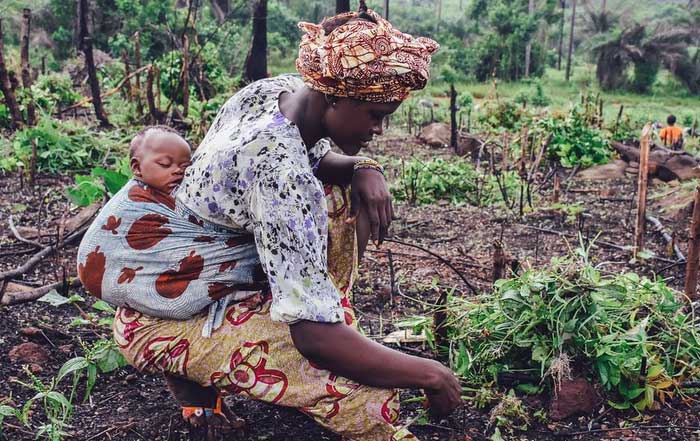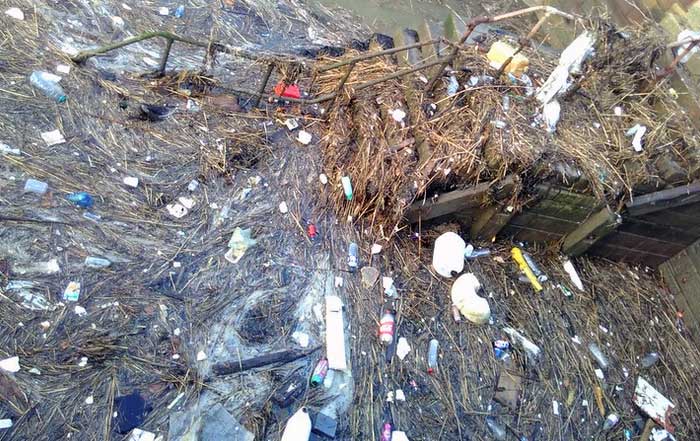In an era marked by rapid technological advancements and an ever-growing awareness of environmental limitations, eco-conscious living has transformed from a niche interest into a fundamental principle guiding decisions made by individuals, businesses, and governments around the globe. The evolution toward sustainable practices is not only a response to pressing ecological challenges but also a testament to the transformative potential of human ingenuity when harnessed for the collective good. At You Save Our World, the commitment to sustainability is deeply interwoven with the belief that every decision, whether made at a corporate boardroom or in the confines of a home, has the power to shape a healthier, more resilient future.
The Emergence of Eco-Conscious Living in 2025
Global communities are witnessing a paradigmatic shift where environmental stewardship and economic prosperity are no longer viewed as mutually exclusive but as interdependent elements that, when harmonized, yield robust and inclusive growth. This transition is underpinned by a convergence of innovation, policy reform, and heightened public awareness. The integration of sustainable practices into daily life reflects a broader commitment to preserving natural resources, reducing pollution, and ensuring the longevity of ecosystems that provide essential services such as clean air, water, and fertile soil. Leading organizations like the United Nations Environment Programme have long championed the notion that long-term prosperity hinges on the judicious management of the planet’s resources, a sentiment echoed by influential research centers such as the Intergovernmental Panel on Climate Change and the National Renewable Energy Laboratory.
Understanding Sustainable Living and Its Importance
Sustainable living, at its core, is predicated on the principle that current resource use must not compromise the ability of future generations to meet their own needs. This philosophy extends beyond the conservation of tangible resources—it is about reimagining how society interacts with nature through every facet of daily life. With increasing urbanization and the relentless pace of industrial growth, the strain on natural ecosystems has become apparent in the form of diminishing biodiversity, polluted air, and overexploited water sources. In recognition of these challenges, eco-conscious initiatives have taken center stage, emphasizing strategies that minimize waste, promote renewable energy, and foster a culture of responsibility toward the environment.
Innovative educational programs, such as those detailed on Environmental Awareness, have played a crucial role in bridging the gap between abstract environmental concepts and practical, everyday actions. By instilling values that celebrate nature and encourage conservation, these programs have nurtured a generation that is both informed and proactive in its approach to sustainability. Additionally, comprehensive research from institutions like the Environmental Protection Agency reinforces the argument that sustainable living is intrinsically linked to improved public health and enhanced quality of life.
Reducing Energy Consumption Through Innovative Solutions
One of the most impactful strategies for mitigating environmental degradation is the reduction of energy consumption. In 2025, societies worldwide have increasingly adopted energy-saving measures that span from the household level to large-scale industrial applications. The shift toward energy-efficient appliances, such as LED lighting and smart thermostats, exemplifies how technology can be leveraged to lower utility bills while simultaneously reducing carbon emissions. For instance, by embracing technologies that enable automated energy management, homes and offices are able to optimize their electricity use, thereby alleviating the strain on power grids and reducing reliance on fossil fuels.
In the realm of industrial production, advancements in energy management systems have revolutionized how factories and manufacturing plants operate. By integrating real-time monitoring tools and automated shutdown mechanisms, companies have managed to cut down on energy wastage while maintaining operational efficiency. The pioneering efforts of organizations like NextEra Energy and Brookfield Renewable Energy Corporation underscore the critical role that energy conservation plays in the transition toward a greener economy. Interested readers can further explore practical strategies for energy conservation on Achieving Sustainable Electricity Use in 2025: Strategies and Insights for Work and Home and discover how technological innovations are driving efficiency improvements.
A closer look at urban initiatives reveals that municipal governments are increasingly incentivizing energy conservation through policy measures that include tax breaks and subsidies for energy-efficient retrofits. In this context, smart grids and digital monitoring systems have emerged as indispensable tools for managing energy distribution and reducing peak demand periods. These systems not only bolster the resilience of power infrastructures but also ensure that energy savings are distributed equitably across communities. For further insights into sustainable energy strategies, one may consult the detailed analysis on Energy Conservation and Home Electricity Generation: Shaping a Sustainable Future.
Embracing Renewable Energy Technologies
Transitioning away from fossil fuels toward renewable energy is widely recognized as a cornerstone of environmental sustainability. Solar, wind, and hydropower represent clean energy sources that, when harnessed effectively, can drastically reduce carbon emissions and foster energy independence. The rapid development and deployment of solar panels have revolutionized residential energy generation, as more households embrace rooftop installations that convert abundant sunlight into electricity. This paradigm shift is supported by numerous government incentives and subsidies, making renewable energy not only a viable alternative but an economically advantageous option for many.
Large-scale wind farms, both onshore and offshore, are another testament to the global commitment to green energy. In many regions, wind energy projects are creating new employment opportunities while simultaneously reducing the dependency on non-renewable resources. The evolution of wind turbine technology, driven by continuous research and innovation from companies such as Xcel Energy and Enel Green Power S.p.A., has led to significant improvements in efficiency and durability. The dynamic interplay between technological advancement and supportive regulatory frameworks is a central theme in the growing body of literature on renewable energy, with additional context available from trusted sources like the World Wildlife Fund and the Sustainable Development Goals.
Hydropower also continues to serve as a reliable renewable resource, particularly in regions endowed with abundant water resources. Through the installation of dams and micro-hydroelectric systems, communities can harness the kinetic energy of flowing water to generate electricity, thereby reducing their reliance on carbon-intensive power sources. As global attention shifts toward sustainable solutions, the integration of diverse renewable energy systems has become essential to achieving a balanced and resilient energy mix. For more detailed discussions on innovative renewable technologies, readers can explore insights shared on The Urgent Need for Alternative Energy in 2025.
Sustainable Transportation and Urban Mobility
The transformation of urban mobility represents a critical component of the broader sustainability agenda, as the transportation sector is a significant contributor to greenhouse gas emissions and air pollution. In 2025, cities across the world are reimagining their infrastructure to support more sustainable modes of travel that reduce both congestion and environmental impact. Public transportation systems, such as electrified bus fleets and expanded train networks, have gained traction as effective alternatives to the pervasive use of private vehicles. These initiatives not only lower carbon footprints but also enhance urban air quality, contributing to healthier living conditions in densely populated areas.
Innovative ride-sharing platforms and carpooling schemes are reshaping how people commute, reducing the overall number of vehicles on the road and consequently diminishing emissions. The advent of electric vehicles (EVs) has further revolutionized urban transportation, with significant advancements in battery technology and the expansion of charging infrastructures. Prominent automotive manufacturers and startups alike have embraced EV production, propelling forward a market trend that emphasizes zero-emission travel. Noteworthy companies such as Clearwater Energy and Enel Green Power S.p.A. have been at the forefront of this movement, paving the way for a future where sustainable transportation is not merely an ideal but an attainable reality.
Beyond public transit and personal vehicles, active transportation methods such as cycling and walking are being prioritized in urban planning. The development of dedicated bike lanes and pedestrian-friendly pathways encourages residents to opt for these healthier and more environmentally benign modes of travel. Urban areas that invest in these infrastructural improvements often witness a cascade of benefits, ranging from reduced traffic congestion to increased community cohesion. For further exploration of sustainable mobility practices, readers can refer to Local Community Recycling Initiatives: Paving the Way for Global Impact and Sustainable Living in the Modern Home.
Waste Management: Recycling, Reuse, and Reduction
Effective waste management is a pivotal element in the pursuit of environmental sustainability, addressing the challenges posed by excessive consumption and the generation of non-biodegradable materials. The modern approach to waste management is multifaceted, incorporating strategies that prioritize reduction, reuse, and recycling. In an era where landfill overflow and plastic pollution have reached critical levels, the implementation of comprehensive recycling programs and waste reduction policies is essential to safeguard natural ecosystems and public health.
Mindful consumption is the starting point for reducing waste, encouraging individuals to rethink their purchasing decisions and opt for products with minimal packaging or reusable components. This cultural shift has been bolstered by community initiatives and educational campaigns, which advocate for practices that minimize waste generation from the outset. Innovative reuse strategies, including the refurbishment of electronics and repurposing of household items, offer practical solutions to the burgeoning problem of waste. Detailed guidance on sustainable waste practices can be found on Minimizing Waste in Everyday Life: Strategies for a Sustainable Future.
Recycling, particularly plastic recycling, remains a cornerstone in the quest to mitigate environmental degradation. Modern recycling facilities employ advanced sorting technologies and chemical processes that enhance the efficiency of converting waste into usable raw materials. These innovations not only reduce the volume of waste destined for landfills but also support the development of a circular economy in which materials are continuously repurposed. The work of pioneering organizations, including those featured in articles like Battling the Tide: Combating Plastic Pollution in the World’s Oceans, underscores the critical role that recycling plays in mitigating the adverse impacts of waste on the environment.
Additionally, local government policies and public-private partnerships have facilitated the expansion of recycling programs, providing communities with the necessary infrastructure to support waste diversion. Such initiatives often include curbside collection services, centralized recycling hubs, and public awareness campaigns that emphasize the importance of proper waste segregation. For a deeper understanding of recycling practices and the challenges they face, readers may consult resources like Recycling as a Cornerstone of Resource Management in 2025 and Expanding Global Challenge of Plastic Pollution.
Conscious Consumption and Ethical Purchasing
At the heart of the sustainability movement lies the concept of conscious consumption, a paradigm that places ethical considerations at the forefront of purchasing decisions. In today’s interconnected world, consumers wield significant influence over market trends, and their collective choices have the power to reshape production practices on a global scale. Ethical purchasing involves a deep awareness of the environmental and social impacts of products, from their inception in resource extraction to their final disposal. By prioritizing goods that are produced with respect for both human rights and environmental integrity, consumers drive demand for higher standards across industries.
Retailers and manufacturers have responded to this shift by embracing transparency and accountability in their supply chains. Initiatives that promote fair trade, environmentally friendly production processes, and cruelty-free testing are gaining traction, providing consumers with the confidence that their spending habits contribute to broader societal benefits. Articles such as Conscious Consumption and Ethical Purchasing offer in-depth analyses of how ethical purchasing practices can propel industries toward more sustainable models. Furthermore, digital platforms and social media have become vital tools for educating consumers on how to identify and support brands that align with sustainable values.
The influence of ethical purchasing extends to various sectors, from fashion and electronics to food and home goods. By choosing products that incorporate recycled materials, support local artisans, or adhere to strict environmental standards, consumers can actively participate in the transition to a greener economy. This paradigm shift not only reduces environmental footprints but also encourages companies to innovate in ways that prioritize sustainability over short-term profit. For additional perspectives on ethical purchasing, readers can explore insights from Sustainable Business and Rising Tide of Sustainable Consumerism: Navigating the Future of Eco-Friendly Choices.
Advancing Sustainable Food Practices
Food production and consumption are central to the discourse on sustainability, given the profound impact of agricultural practices on the environment. In 2025, a concerted effort to align food systems with environmental stewardship is evident in the growing popularity of locally sourced, organic, and regenerative agricultural practices. Sustainable food practices not only reduce the ecological footprint of food production but also enhance food security and promote healthier lifestyles.
The emphasis on local food sourcing has gained momentum as communities seek to reduce the energy-intensive logistics associated with long-distance transportation. By purchasing produce from nearby farms and supporting community-supported agriculture (CSA) programs, consumers are able to enjoy fresher, more nutritious foods while simultaneously lowering carbon emissions. This approach also strengthens local economies by fostering direct relationships between farmers and consumers. Detailed discussions on these themes can be found in resources such as Local Food Sourcing: A Cornerstone of Sustainable Living.
Moreover, the transition to plant-forward diets has emerged as a viable strategy for reducing the environmental impacts associated with livestock farming, which is known to be a significant source of greenhouse gases. While this does not necessitate a complete shift away from animal-based products, the integration of more plant-based meals into daily routines can markedly reduce resource consumption and mitigate environmental degradation. The convergence of nutritional science and sustainability is also highlighted in discussions on organic agriculture, as detailed in Embracing Organic Agriculture: A Pillar for Sustainable Living in 2025.
Advances in agricultural technology are also reshaping food production methods. Precision agriculture, which utilizes data analytics, drones, and sensor technologies, allows farmers to optimize water usage, reduce chemical inputs, and maximize crop yields with minimal environmental disruption. These innovations not only improve resource efficiency but also contribute to a reduction in the carbon footprint of agricultural practices. For further insights into how technology is driving sustainable food practices, interested readers can refer to The Enduring Promise of Sustainable Agriculture.
Water Conservation and Resource Management
Water, an indispensable natural resource, is increasingly under threat as populations grow and climate variability intensifies. In 2025, water conservation has emerged as a critical priority for both households and governments, driven by the need to preserve this vital resource for future generations. A multifaceted approach to water conservation involves everything from repairing household leaks to deploying advanced irrigation technologies in agriculture.
At the domestic level, simple yet effective practices such as installing low-flow showerheads, repairing dripping faucets, and adopting water-efficient appliances can result in significant water savings over time. Homeowners are encouraged to adopt these measures not only to reduce utility bills but also to contribute to the broader goal of sustainable resource management. For practical tips on water conservation, readers can consult Sustainable Home Water Conservation Strategies for a Thirsty Planet.
On a larger scale, the integration of rainwater harvesting systems in urban and rural developments has proven to be an innovative solution for mitigating water scarcity. These systems collect and store rainwater for use in irrigation and other non-potable applications, thereby reducing the burden on municipal water supplies. In agricultural settings, the adoption of micro-irrigation techniques, such as drip irrigation, has enhanced the efficiency of water use, ensuring that crops receive precisely the amount of moisture needed without wasteful runoff. The importance of these techniques is further elaborated in Imperative of Preserving Fresh Water: Addressing Scarcity and Water Shortages.
Municipal authorities also play a critical role in water conservation by implementing policies that encourage responsible usage and penalize excessive consumption. Educational initiatives and community-based programs have been effective in raising awareness about the finite nature of water resources and the importance of conservation. By fostering a culture of accountability and proactive stewardship, communities are better equipped to manage water supplies in the face of increasing demand and climate uncertainty.
The Role of Policy and Community Engagement in Sustainable Living
Sustainable development is as much about robust policy frameworks as it is about grassroots initiatives. In 2025, the interplay between government regulations, corporate commitments, and community participation has created a dynamic environment in which environmental protection is prioritized at every level. Progressive policy measures, such as renewable energy incentives, waste management regulations, and urban planning reforms, are driving substantial shifts toward a more sustainable society.
Effective policy is characterized by its ability to mobilize resources, set clear targets, and enforce accountability across various sectors. For example, extended producer responsibility programs require companies to consider the environmental impacts of their products from production to disposal, thus ensuring that waste management is embedded within corporate operations. Policies like these, along with green zoning laws and building standards, create a conducive environment for eco-friendly innovations and sustainable urban development. Detailed explorations of these initiatives can be found in Global Call to Rethink Waste: Emerging Initiatives and the Future of Sustainability.
Community engagement further amplifies the effectiveness of these policies by transforming passive awareness into active participation. Local groups and non-profit organizations have been instrumental in mobilizing citizens to partake in environmental clean-up events, community gardens, and recycling drives. Such initiatives not only foster a sense of ownership and pride in local environments but also serve as a catalyst for broader systemic change. Readers interested in learning more about community-driven environmental efforts can explore Local Community Recycling Initiatives: Paving the Way for Global Impact.
The synergy between policy and community participation is also evident in educational outreach programs that empower citizens with the knowledge and tools necessary to make sustainable choices. From workshops on composting and renewable energy to public lectures on climate change, these initiatives bridge the gap between legislative intent and tangible action, reinforcing the idea that sustainability is a collective responsibility.
The Economic Benefits of Sustainability
The economic implications of sustainable practices are increasingly recognized as a pivotal factor in the global shift toward eco-conscious living. Far from being a drain on resources, sustainability initiatives have proven to be economically advantageous, offering long-term savings, job creation, and competitive market opportunities. Cost efficiencies achieved through energy conservation, waste reduction, and sustainable production processes often translate into increased profitability and enhanced corporate reputation.
On the corporate front, businesses that integrate sustainability into their operational strategies frequently experience improved stakeholder relations and increased investor confidence. Companies with robust environmental, social, and governance (ESG) profiles tend to attract investment from a growing pool of socially responsible investors, thereby bolstering their market position and reducing financial risks. The progressive approaches adopted by industry leaders such as Xcel Energy and Enel Green Power S.p.A. serve as compelling examples of how sustainability can drive economic success. For further details on the economic impacts of sustainability, readers may consult Fostering Financial Literacy and Advancing Sustainable Investing in 2025.
Small and medium enterprises (SMEs) are also discovering that sustainable business practices offer a competitive edge by opening up niche markets for eco-friendly products and services. Entrepreneurs who pioneer innovative solutions—ranging from biodegradable packaging to zero-waste retail environments—are carving out new opportunities in an increasingly eco-conscious marketplace. These trends are not only reshaping consumer expectations but are also contributing to broader economic stability and resilience. More insights on sustainable market trends can be found on Sustainable Business.
At the macroeconomic level, investments in green infrastructure, renewable energy installations, and energy-efficient technologies are stimulating job creation and driving growth in new sectors. Government-led initiatives, complemented by private sector investment, are transforming traditional industries and setting the stage for a future in which sustainability is at the heart of economic policy. For a deeper dive into these developments, interested readers can explore articles like The Evolving Landscape of Global Business in 2025.
Innovations in Sustainable Technology
Technological innovation has emerged as a critical enabler of sustainable development, fostering breakthroughs that make eco-friendly practices more accessible and scalable. In 2025, investments in research and development have yielded significant advancements in areas such as energy storage, precision agriculture, and waste processing technologies. These innovations not only address the immediate challenges posed by climate change and resource scarcity but also lay the groundwork for long-term systemic transformation.
One notable area of technological progress is the evolution of battery storage systems. Improved lithium-ion and emerging solid-state batteries have extended the lifespan and performance of energy storage solutions, thereby supporting the broader integration of renewable energy sources into both residential and industrial power grids. The work of companies like NextEra Energy exemplifies how technological improvements are reducing reliance on fossil fuels and enhancing energy security. For additional technical insights, readers may refer to trusted resources like Bloomberg Green and Forbes Sustainability.
In the agricultural sector, precision farming techniques are transforming how food is produced by harnessing the power of data analytics, drone surveillance, and sensor technologies. These tools enable farmers to monitor crop health, optimize irrigation schedules, and reduce chemical inputs, thereby minimizing the environmental impact of traditional farming practices. Such innovations not only boost crop yields but also contribute to the sustainability of food production systems. For more detailed information on these advancements, Embracing Unplugged Learning for a Sustainable Future offers a compelling narrative on how technology and education intersect to promote sustainable practices.
Waste management technologies have also seen significant improvements, with modern recycling facilities now employing artificial intelligence and robotics to enhance the sorting and processing of materials. These innovations are critical in addressing the complex challenges posed by diverse waste streams and ensuring that valuable resources are recovered efficiently. Further details on waste processing innovations can be found on Transformative Power of Composting Practices, Partnerships and Progress.
Personal Responsibility and Mindful Living
While technological and systemic changes are crucial for sustainable development, the role of personal responsibility remains indispensable in driving long-term environmental progress. In 2025, an increasing number of individuals are embracing mindful living, a lifestyle characterized by intentionality in consumption, a commitment to minimalism, and an acute awareness of one’s impact on the environment. This personal journey toward sustainability is often reflected in everyday decisions—whether choosing to reduce energy usage at home, opting for public transportation, or supporting local and ethical businesses.
Mindfulness practices, ranging from meditation and journaling to nature walks, empower individuals to develop a deeper connection with their surroundings. This introspection fosters an appreciation for natural resources and motivates people to adopt habits that reduce waste and conserve energy. At You Save Our World, the belief is that small, consistent changes in personal behavior can collectively drive monumental shifts in environmental stewardship. For practical advice on how to integrate mindfulness into sustainable living, readers can visit Transforming Your Home into an Eco-Friendly Haven.
Furthermore, the shift toward minimalist lifestyles encourages a rejection of the throwaway culture that has dominated modern consumerism. By focusing on quality rather than quantity, individuals are not only reducing their ecological footprints but also fostering a sense of satisfaction and well-being that stems from living with intention. In addition, initiatives that promote community sharing—such as tool libraries and repair cafes—underscore the value of resourcefulness and collective responsibility. Additional insights into the benefits of mindful consumption can be found on The Power of Sustainable Gardening.
Corporate Leadership in Sustainable Business Practices
The business sector has emerged as a formidable force in the global sustainability movement, with many corporations recognizing that integrating eco-friendly practices into their operational frameworks is both a moral imperative and a strategic advantage. Forward-thinking companies are increasingly embedding sustainability into their core missions, adopting policies that range from reducing carbon footprints to ensuring fair labor practices throughout their supply chains. This transformation is underscored by the growing emphasis on environmental, social, and governance (ESG) criteria as critical benchmarks for corporate success.
Corporate leaders, such as Enel Green Power S.p.A. and Brookfield Renewable Energy Corporation, exemplify the potential for business innovation to drive significant environmental progress. By investing in renewable energy projects, reducing waste, and rethinking supply chain logistics, these organizations not only enhance their competitiveness but also contribute to broader societal benefits. Detailed explorations of corporate sustainability strategies are available in resources like Sustainability Leadership in 2025: Redefining Corporate Impact.
Many companies are also leveraging Corporate Social Responsibility (CSR) programs to engage with local communities and promote environmental initiatives. By sponsoring conservation projects, supporting sustainable agriculture, and investing in renewable technologies, businesses are bridging the gap between profit motives and social responsibility. This alignment of values reinforces consumer trust and fosters a culture in which environmental integrity is seen as integral to long-term success. For additional perspectives on corporate sustainability, readers are encouraged to explore The Evolving Landscape of Intellectual Property Rights in 2025.
Challenges and Opportunities on the Road to Sustainability
Despite the significant strides made in embracing eco-conscious living, numerous challenges persist in the journey toward a fully sustainable society. High initial costs associated with renewable energy installations, infrastructural limitations, and the inertia of longstanding habits continue to pose obstacles that must be overcome. However, these challenges simultaneously present opportunities for innovation, collaboration, and systemic change.
One of the most formidable barriers is the financial investment required for transitioning to renewable energy, modernizing urban infrastructures, and deploying advanced recycling technologies. While the long-term benefits of these investments are indisputable, the upfront costs can be prohibitive for many individuals and small businesses. In response, innovative financing models such as community solar projects and micro-loan programs are emerging as viable solutions to bridge this gap. Readers seeking financial insights into sustainable living may find valuable information in Fostering Financial Literacy and Advancing Sustainable Investing in 2025.
Another challenge lies in overcoming cultural and behavioral resistance to change. Many individuals are hesitant to alter established routines, particularly when new practices require an initial investment of time or resources. This resistance, however, is gradually being eroded by increasing public awareness, education campaigns, and demonstrable success stories from early adopters. Community-driven initiatives and social media campaigns play a pivotal role in normalizing sustainable practices, thereby accelerating their adoption on a broader scale. Further exploration of these transformative trends can be found in Rising Tide of Sustainable Consumerism: Navigating the Future of Eco-Friendly Choices.
Infrastructural challenges also present a dual-edged sword: while outdated urban designs and inadequate public transportation systems can hamper sustainability efforts, they simultaneously offer a fertile ground for innovative urban planning and smart city initiatives. Collaborations between municipal governments, private enterprises, and community organizations are spearheading projects that not only revitalize urban landscapes but also set new standards for energy efficiency and environmental resilience. For insights into urban transformation, readers may refer to The Evolving Landscape of Global Business in 2025.
The Future Outlook for Eco-Conscious Living
As 2025 unfolds, the future of eco-conscious living appears both promising and dynamic, buoyed by technological innovation, progressive policy frameworks, and an ever-growing collective commitment to environmental stewardship. Projections suggest that renewable energy will continue to replace fossil fuels at an accelerating pace, while emerging technologies will further optimize resource use and reduce environmental impacts across various sectors. The convergence of digital innovation with environmental imperatives is set to redefine market dynamics, foster new industries, and reshape urban infrastructures in ways that were once unimaginable.
Economic models are also evolving to reflect the true costs and benefits of sustainability. As consumer demand for eco-friendly products and services continues to rise, companies that fail to adapt may find themselves at a competitive disadvantage, while those that embrace sustainable practices are poised to enjoy enhanced profitability and brand loyalty. The growing body of research on the economic benefits of sustainability, including insights from the Environmental Protection Agency and Forbes Sustainability, underscores the long-term advantages of investing in green technologies and practices.
Furthermore, the continued expansion of educational and awareness programs is expected to cultivate a more informed and engaged populace, one that is capable of driving meaningful change at both the individual and collective levels. Through innovative learning platforms, community workshops, and digital campaigns, the narrative of eco-conscious living is being disseminated widely, empowering citizens to act as stewards of the environment. For those seeking to deepen their understanding of environmental issues, resources such as The Guardian Environment and BBC Environment offer comprehensive analyses and up-to-date information.
Conclusion: A Collaborative Journey Towards a Sustainable Future
The evolution of eco-conscious living stands as a powerful testament to humanity’s capacity for resilience, innovation, and collective action. In 2025, the intricate tapestry of sustainable practices—spanning energy conservation, renewable energy adoption, waste management, ethical consumption, and urban transformation—reflects a global commitment to safeguarding the planet for future generations. At You Save Our World, the conviction is clear: every individual decision, every corporate initiative, and every policy reform contributes to a larger narrative of environmental preservation and economic prosperity.
The journey toward sustainability is neither straightforward nor devoid of challenges, yet it is precisely these challenges that galvanize communities to forge new paths, develop groundbreaking technologies, and rethink long-standing practices. With a growing consensus that environmental stewardship and economic growth are not mutually exclusive but mutually reinforcing, the global community is poised to embrace a future in which innovation, responsibility, and ethical considerations drive progress.
Through partnerships that bridge government, industry, and civil society, the path forward is illuminated by a shared vision of a world where natural resources are valued, waste is minimized, and every action taken contributes to a legacy of prosperity and ecological balance. As the momentum behind eco-conscious living continues to build, it serves as a poignant reminder that the collective power of informed, determined citizens can effect transformative change, ensuring that nature’s wonders endure for generations to come.
For further exploration of sustainability practices and to join a community dedicated to making a positive impact, readers are encouraged to visit You Save Our World and explore additional resources such as Achieving a Pristine Home and Protecting the Planet, Environmental Challenges in 2025: Navigating a Critical Crossroads, and The Ever-Evolving Craft of Effective Communication. Engaging with these platforms provides a deeper understanding of how everyday choices can lead to significant environmental benefits and paves the way for a more sustainable and equitable future.
As the world collectively embraces the imperative of sustainability, it becomes increasingly evident that the responsibility to protect our planet lies in the hands of every individual and organization. By harnessing the power of innovation, policy reform, and community engagement, a future that harmonizes economic growth with environmental preservation is not only possible—it is already unfolding before our eyes.
For ongoing updates on sustainable practices and global environmental initiatives, readers are invited to explore external insights from the United Nations Environment Programme, National Renewable Energy Laboratory, World Wildlife Fund, and Sustainable Development Goals. These resources, along with comprehensive analyses from trusted media outlets such as The Guardian Environment and Bloomberg Green, offer invaluable perspectives that inspire and inform the journey toward a sustainable future.
In this dynamic era of change, the commitment to eco-conscious living resonates as both a personal and collective imperative. The transformative potential of sustainable practices is a beacon of hope for a world that, through shared responsibility and innovative collaboration, can secure a thriving future for all.
By taking on the profound interconnectedness of economic, social, and environmental systems, the global community stands at the threshold of a new chapter in human progress—one where sustainability is not merely a goal, but a way of life. With each innovation, policy reform, and conscientious decision, the journey toward a greener, more equitable world accelerates, inviting everyone to participate in the creation of a legacy that will endure for generations.








